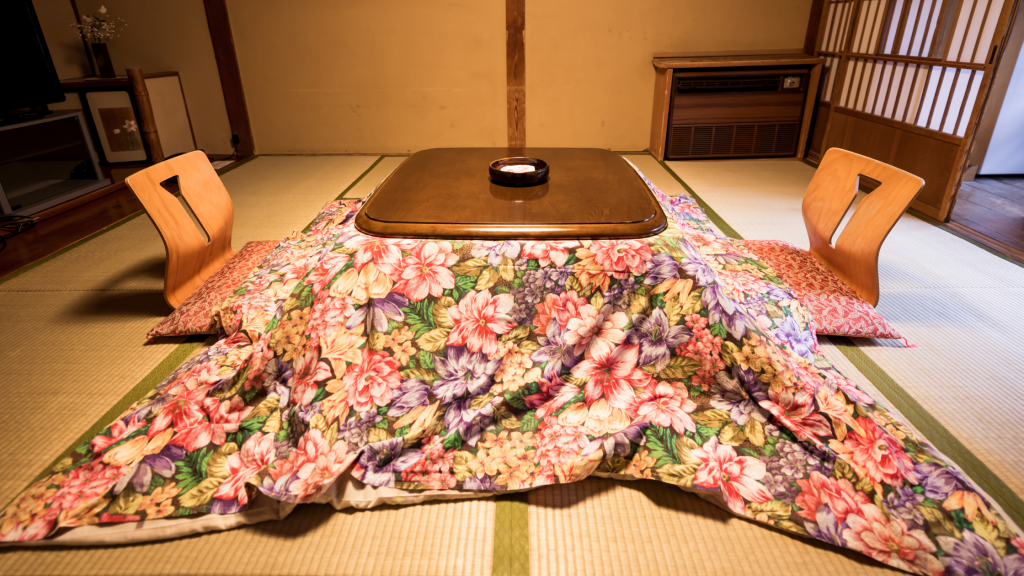What so special about the Japanese kotatsu table?
Foreigners traveling around Japan during the winter are often very surprised by how cold Japanese homes can be.
They wonder why such an advanced country is incapable of heating houses. Indeed, whether traditional or western, most Japanese homes don’t provide any type of isolation from the cold.
One might even say that Japanese houses are colder than the outside!
One of the main reasons for this would be that the houses are built to be comfortable during the hot and humid summer in Japan.
From June to September, extremely hot temperatures hammer Japan quite hard. However, this would usually preceded by Tsuyu: The Japanese Rainy Season.
Nevertheless, to escape from the heat wave during Summer, Japanese people do still prefer to live in cool houses. After all, (excluding the Northern part of Japan) winters are quite short and mild.
Therefore, isolation from the cold isn’t seen as a priority for many Japanese families.
Another interesting reason as to why Japanese people don’t seem to care for home heating systems is that they prefer (and thoroughly enjoy) the wonders of heated toilet seats, electric carpets, costly air conditioning heater units, and of course, the unique and beloved kotatsu table.

Summed up, a Kotatsu is a heating table covered with a blanket under which your body will stay warm, even in a freezing room.
The warmth derives from the heat source underneath the table – most often built into the table itself.
The Japanese kotatsu dates back to the 14th century, when a seating area was introduced around the charcoal burner used for cooking meals, with the addition of a quilt on its top. In the countryside, some of the kotatsu was big enough to allow 20 people to sit around the cooking pit.
During the Edo era, the kotatsu became a low table frame, usually made of wood, covered with a heavy blanket upon which a table top sat.
In modern times, the kotatsu is moveable. Charcoal, the traditional heating source, was eventually replaced by electricity. The heater is now attached to the underside of the table, and the table itself is no longer only made of wood but can also be made of other materials.
Since the kotatsu is a low table, people typically sit on the floor or on a cushion. Only the lower body is meant to rest under the blanket to keep your body warm.
For Japanese people, it’s a way to stay warm at a lower cost. Wherever the kotatsu is located is where everyone in the house will hold most activities during the cold season.
The kotatsu represents the heart of the Japanese home during winter and is an important element of Japanese culture. Family members gather together and enjoy watching television, playing games and having long talks during the evening under the warmth of the table.
If you’re into living in a traditional Japanese room during your trip, why not check out Ryokans! These are traditional Japanese hotels but do hold many significant differences over what we may consider a “Hotel” today.
That being said, one activity should be avoided: sleeping! Indeed, there’s always a risk of burn if one accidentally touches the heating system while asleep. The only one enjoying sleeping long hours under the blanket is the family’s cat!
Quick Japanese Guide
To go under the kotatsu: こたつに入る
To use a kotatsu: こたつを使う